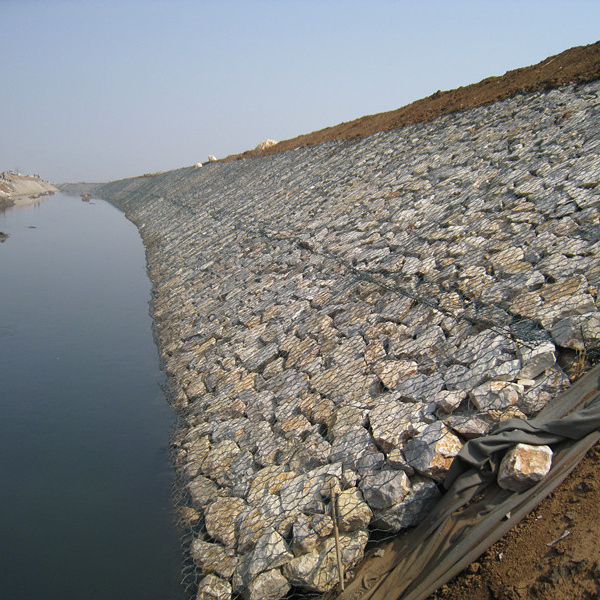des . 16, 2024 21:34 Back to list
high quality gabion and wood retaining wall
High-Quality Gabion and Wood Retaining Walls An Effective Solution for Erosion Control and Landscape Design
Retaining walls play a pivotal role in landscape architecture and erosion control, providing structural integrity to sloped terrains and enhancing the aesthetic appeal of outdoor spaces. Among the various materials available for constructing these walls, high-quality gabions and wood have garnered significant attention due to their unique benefits and versatility. This article delves into the advantages of both materials, their applications, and the reasons to consider a gabion and wood retaining wall for your next landscaping project.
Understanding Gabions
Gabions, traditionally wire mesh containers filled with stones or rock, have been used for centuries in various civil engineering applications. The name gabion originates from the Italian word gabbione, meaning large cage. These structures provide excellent drainage and are highly effective in controlling soil erosion, making them a popular choice for retaining walls.
One of the primary advantages of gabions is their durability. When constructed with high-quality materials and installed correctly, gabion walls can withstand harsh environmental conditions, including extreme weather and hydrological forces. Furthermore, because they are permeable, they allow water to pass through, reducing the buildup of hydrostatic pressure that can damage traditional retaining walls.
Gabions are also environmentally friendly. The materials used, such as natural stones, can often be sourced locally, thus minimizing the carbon footprint associated with transportation. Over time, vegetation can grow in and around gabion walls, blending them seamlessly into the natural landscape and providing additional stability.
The Charm of Wood Retaining Walls
On the other hand, wood retaining walls are celebrated for their aesthetic appeal. They bring a warm, rustic charm to gardens and outdoor spaces. Wood, particularly treated varieties such as cedar, redwood, or pressure-treated pine, can withstand the elements and offer lasting structural support.
Wooden retaining walls are often easier to construct than their stone counterparts. They can be cut and shaped to fit various designs and are typically more affordable than stone or brick walls. Moreover, they can be adapted for various landscaping aesthetics, from contemporary to traditional, making them a versatile choice for homeowners and landscapers.
However, it is crucial to select high-quality, durable wood that is resistant to decay and insect damage. Regular maintenance, such as sealing and staining, can extend the life of wood retaining walls and keep them looking vibrant.
The Combination of Gabion and Wood
Combining high-quality gabions with wood elements creates a visually stunning and structurally sound retaining wall. The contrast of natural stones and wood enhances the overall design and functionality of outdoor spaces. For instance, a gabion wall can serve as a strong base, while wood can be used for the top or face, offering a smooth finish that is easy to manage.
high quality gabion and wood retaining wall

This hybrid approach not only improves the structural integrity of the wall but also promotes drainage and reduces the risk of erosion
. The stone cages dissipate water pressure, while the wood adds an aesthetic touch, making this combination ideal for terraces, gardens, or any landscaped environment requiring elevation changes.Applications and Benefits
Gabion and wood retaining walls can be utilized in a variety of settings, including residential gardens, commercial properties, and public parks. They are particularly effective in locations prone to erosion, steep slopes, or where water management is crucial.
Some benefits of incorporating gabion and wood retaining walls into your landscape project include
1. Erosion Control The combination of materials stabilizes soil, preventing erosion and promoting healthy vegetation growth.
2. Drainage Gabions allow water to flow through while retaining soil, reducing the risk of water pooling and damage.
3. Aesthetic Versatility This combination offers endless design possibilities, fitting seamlessly into various landscaping styles.
4. Sustainability Utilizing natural stones and sustainably sourced wood contributes to eco-friendly landscaping.
5. Cost-Effectiveness A combination of these materials can reduce overall construction costs compared to using solely expensive stone or masonry.
Conclusion
In conclusion, high-quality gabion and wood retaining walls present a practical and aesthetically pleasing solution for managing slopes, preventing erosion, and enhancing outdoor spaces. Their durability, versatility, and environmental benefits make them an excellent choice for both residential and commercial applications. When considering your next landscape project, weighing the advantages of gabion and wood combinations can lead to a successful and sustainable outcome.
-
HESCO Gabion Baskets for Coastal Erosion Prevention
NewsAug.22,2025
-
Longevity and Durability of River Rock Gabion Walls
NewsAug.22,2025
-
How to Integrate Gabion 3D Walls in Urban Planning
NewsAug.22,2025
-
Reno Mattress Gabion Applications in Civil Engineering
NewsAug.22,2025
-
How to Install Wire Mesh for Gabion Baskets Properly
NewsAug.22,2025
-
Best Materials for Filling a Chain Link Gabion
NewsAug.22,2025
-
Wire Mesh Thickness Impact on Gabion Wall Load Bearing
NewsAug.12,2025






